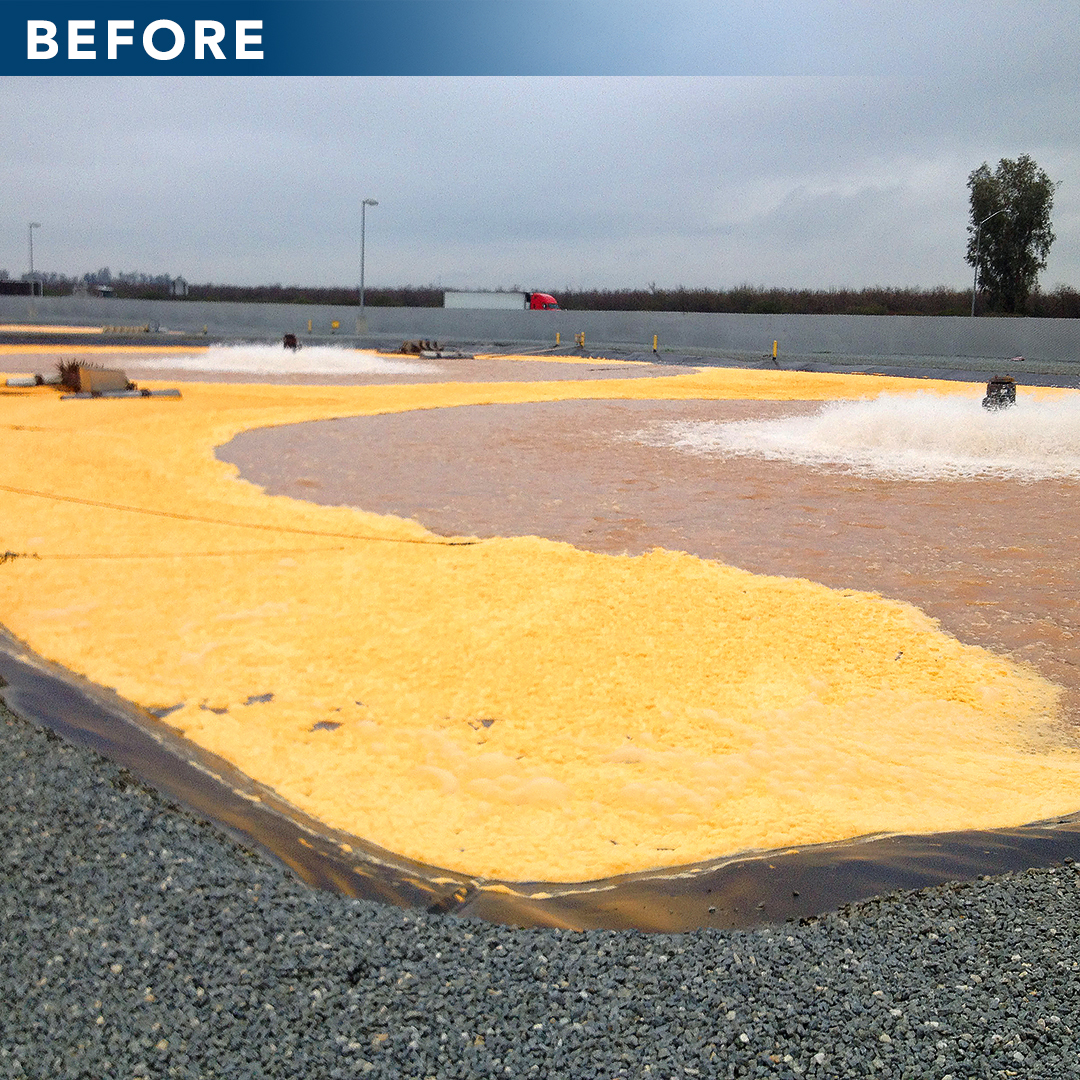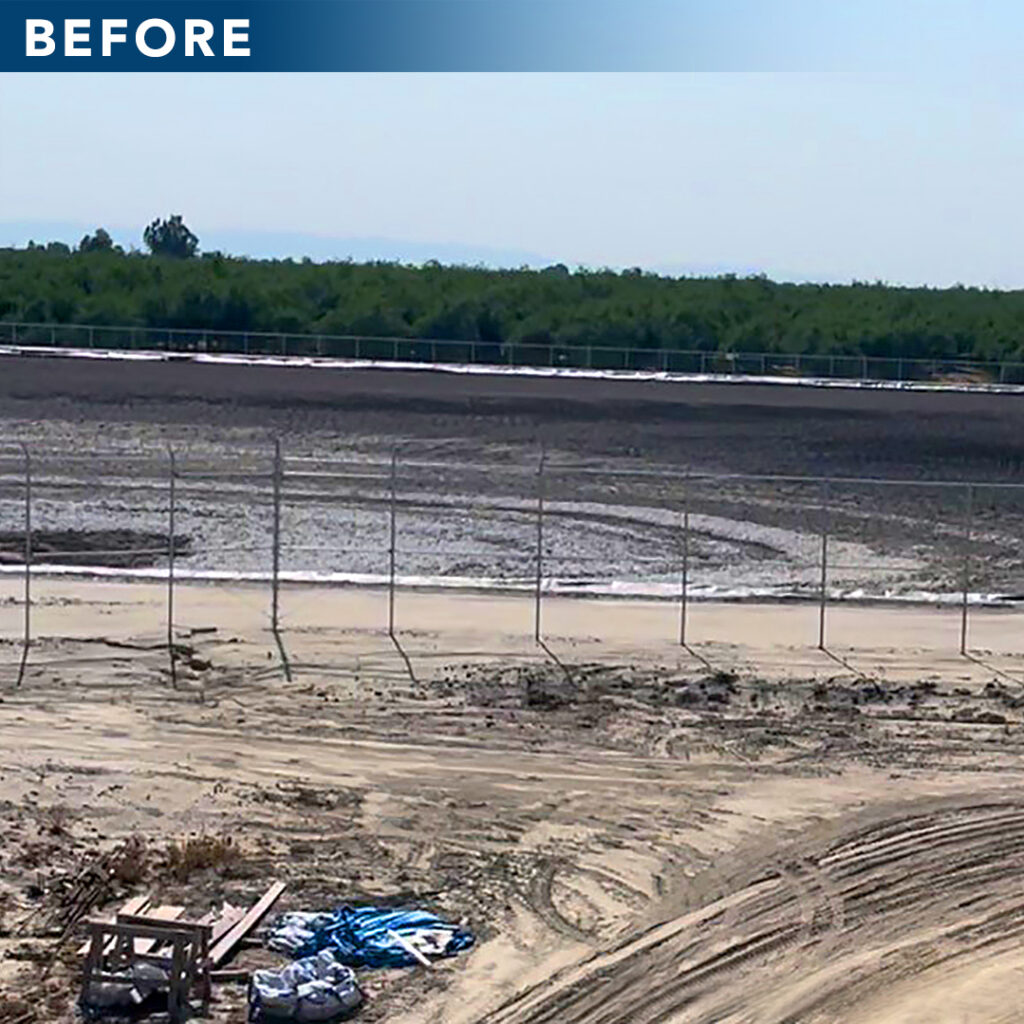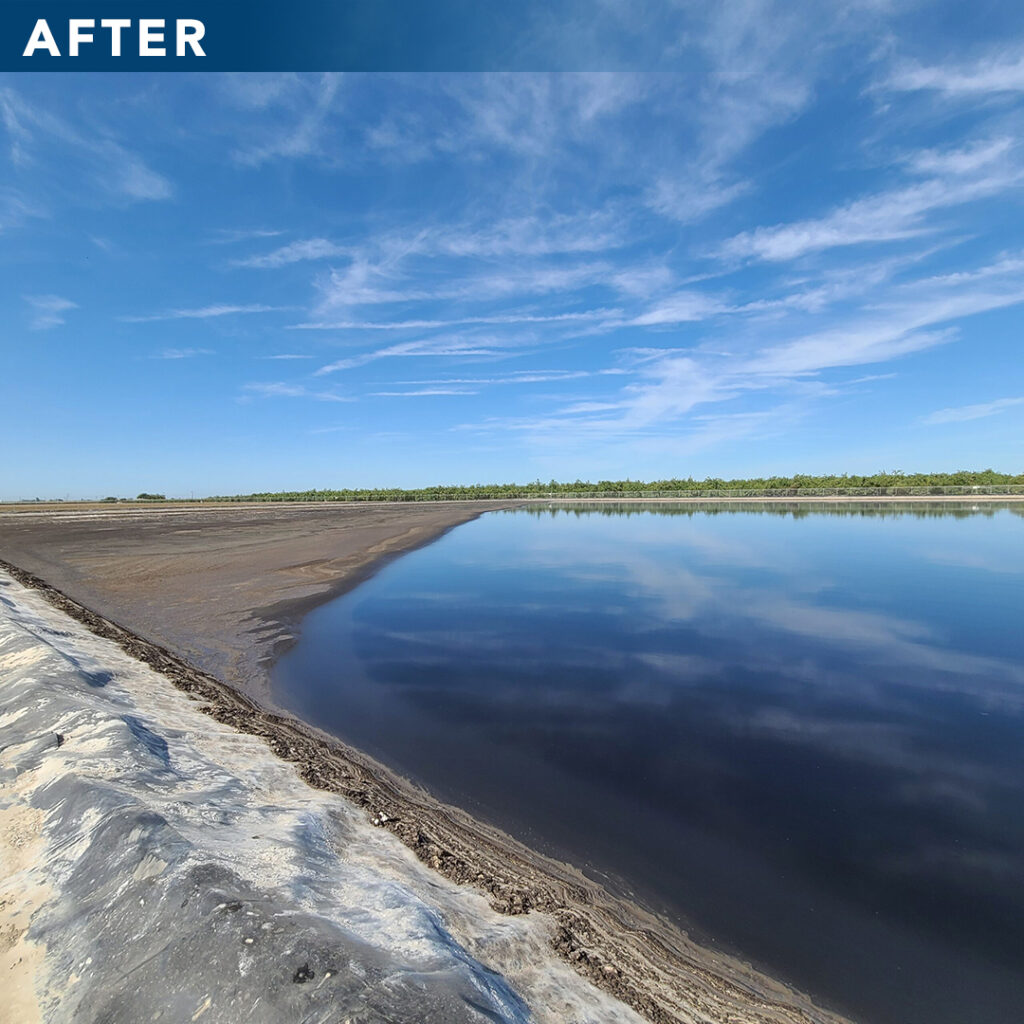Food Processing Wastewater Ponds


The wastewater pond shown above is located at a creamery in the south San Joaquin Valley of California. The challenges with processing milk and dairy products come in many shapes and sizes, but in this case, they ended up with the excessive amount of butterballs. The butterballs float on top of the wastewater pond and build up, and can possibly be blown out on to a nearby highway. In addition to the butterballs, there is also a buildup of sludge on the bottom of these wastewater ponds. The treatment protocols with the Microbe-Lift series provided them with an easy and economical solution to these problems.


The pond above was built as part of a brand-new wastewater facility at a beef processing plant. Unfortunately, they had to start discharging raw effluent into the pond before the new wastewater plant came online. The photo on the left shows this resulted in an obvious mess with the grease floating on top of the surface. The picture on the right was taken 45 days after treatment. We treated with a combination of Microbe-Lift products that eliminated the grease cap and improved the overall water quality in this pond and the downstream pond.
Tomato Ponds Can Be Challenging


AquaNatural Solutions began treating this tomato processing pond in the summer of 2012. The before photo shows that their challenges were not only organics floating on top and a buildup of sludge in the bottom of the ponds, but they were also overwhelmed with a significant number of odor complaints from the neighboring city. Prior to the start of treatment, this processor had to remove three to four feet of sludge from their ponds annually. To make matters worse, BOD and COD numbers were out of compliance with the water board.
The after photo shows how we successfully reduced the amount of sludge buildup in the ponds and odor complaints from the neighboring city, and also significantly reduced the regulatory numbers for the water board. We continue to treat this pond with great success today.
It’s not uncommon to see this type of mess in a tomato processing facility wastewater pond. Processing tomatoes for paste or canning leaves a lot of organic material behind to be handled by the wastewater system, fortunately we have the solution handle these challenges.
